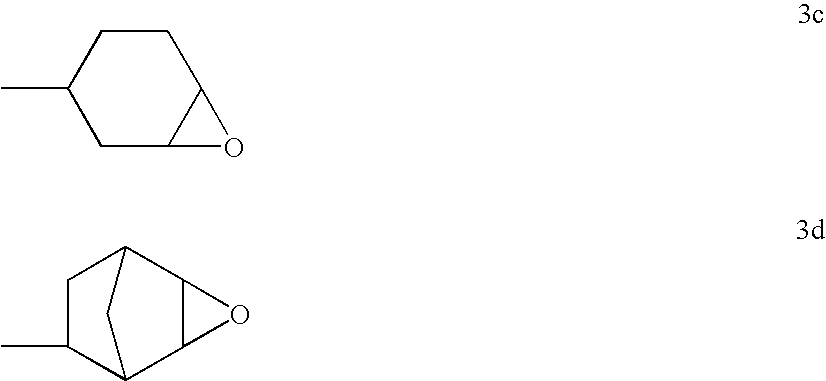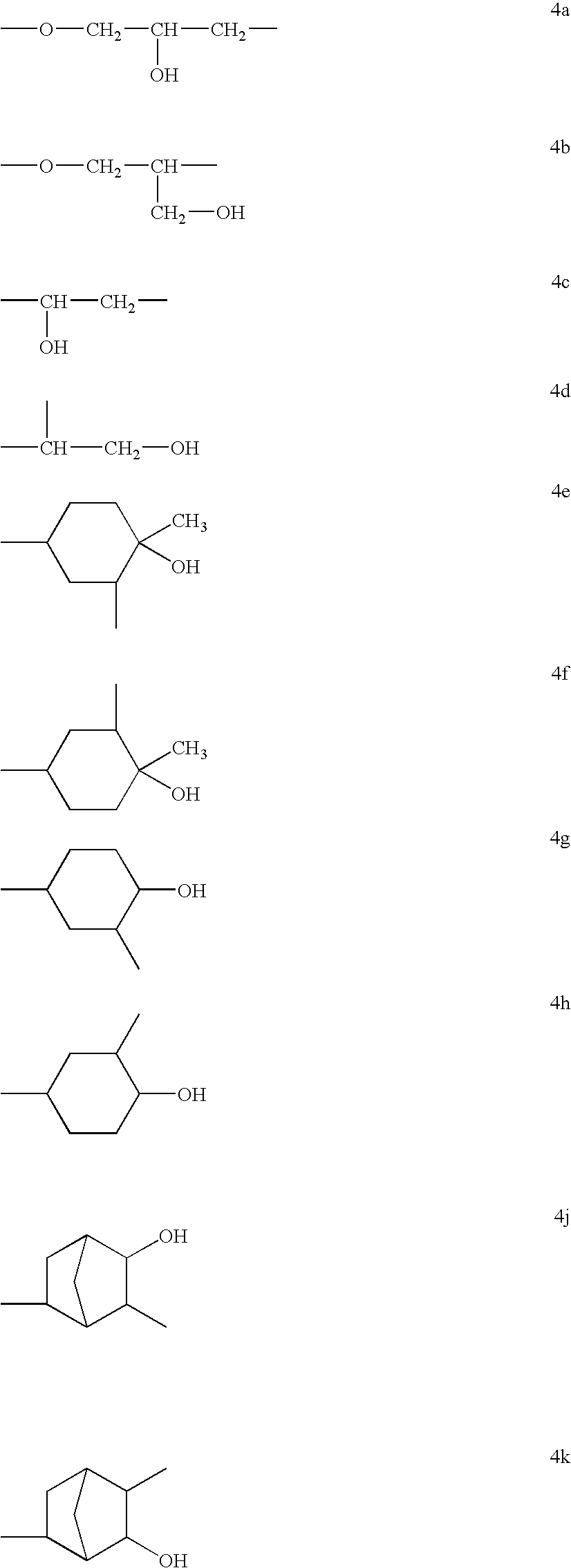Polyether-modified polysiloxanes with block character and use thereof for producing cosmetic formulations
a technology of polyether and polysiloxane, which is applied in the direction of hair cosmetics, detergent compounding agents, disinfection, etc., can solve the problems that the flexibility of the formulation or the sensory profile of the more elegant can not be improved further using the described siloxane derivatives, and the demand for cosmetic formulations continues to grow. , to achieve the effect of improving skin feel and softer hand
- Summary
- Abstract
- Description
- Claims
- Application Information
AI Technical Summary
Benefits of technology
Problems solved by technology
Method used
Image
Examples
example 1 (
NOT ACCORDING TO THE INVENTION)
[0134] Preparation of a Polydimethylsiloxane-poly(methylhydrogen)siloxane Copolymer Interspersed with SiH Functions in a Domain-Type Manner
[0135] In a 2 l four-neck round-bottomed flask with KPG stirrer, reflux condenser and nitrogen blanketing, 16.3 g of hexamethyldisiloxane were admixed with 256.6 g of a poly(methylhydrogen)siloxane (molar mass: 2868.1 g / mol, SiH value: 15.69 Val / kg) and 867.7 g of decamethylcyclopentasiloxane and with 68.5 g of a predried Purolite C 150 MBH (crosslinked, macroporous sulfonic acid polystyrene resin), and the reaction mixture was heated at 60° C. for 6 hours with stirring. The sulfonic acid solid-phase catalyst was removed by filtration after cooling the reaction matrix.
example 2 (
ACCORDING TO THE INVENTION)
[0136] Preparation of an Alkyl Polyethersiloxane with a Domain-Type Structure:
[0137] In a 250 ml four-neck flask fitted with KPG stirrer, reflux condenser and nitrogen blanketing, 100 g of the polydimethylsiloxane-poly(methylhydrogen)siloxane copolymer with a domain-type structure (SiH value: 3.53 Val / kg) were heated to 90° C. and admixed with 10 ppm of platinum (based on the total mixture in the form of cis-diamminoplatinum(II) chloride). 30 g of hexadecene-1 were added, whereupon the hydrosilylation reaction started. After about 30 minutes, the reaction mixture was admixed with 47.7 g of a hydroxyfunctional allyl polyether constructed from ethylene oxide units which had an average molecular weight of about 500 g / mol. One hour after the addition of reactants was complete, a further 33.3 g of hexadecene-1 were added and the mixture was left for a further 2 hours at the reaction temperature. Gas-volumetric SiH determination (decomposition of an aliquot sam...
example 3 (
NOT ACCORDING TO THE INVENTION)
[0138] Analogously to example 2, 100 g of a randomly equally distributed polydimethylsiloxane-poly(methylhydrogen)siloxane copolymer (SiH value: 3.53 Val / kg) were heated to 90° C. and admixed with 10 ppm of platinum (based on the total mixture in the form of cis-diamminoplatinum(II) chloride). Following the addition of 30 g of hexadecene-1, the mixture was stirred for half an hour and the reaction mixture was supplemented through the addition of 47.7 g of a hydroxyfunctional allyl polyether constructed from ethylene oxide units (average molecular weight of about 500 g / mol). After one hour, a further 33.3 g of hexadecene-1 were added and after-reacted for 2 hours. Gas-volumetric SiH determination (decomposition of an aliquot sample amount with sodium butoxide solution in a gas burette) demonstrated a quantitative conversion. The virtually colorless, clear alkylpolyethersiloxane could be used directly as an emulsifier.
PUM
| Property | Measurement | Unit |
|---|---|---|
| Time | aaaaa | aaaaa |
| Molar mass | aaaaa | aaaaa |
| Molar mass | aaaaa | aaaaa |
Abstract
Description
Claims
Application Information
 Login to View More
Login to View More - R&D
- Intellectual Property
- Life Sciences
- Materials
- Tech Scout
- Unparalleled Data Quality
- Higher Quality Content
- 60% Fewer Hallucinations
Browse by: Latest US Patents, China's latest patents, Technical Efficacy Thesaurus, Application Domain, Technology Topic, Popular Technical Reports.
© 2025 PatSnap. All rights reserved.Legal|Privacy policy|Modern Slavery Act Transparency Statement|Sitemap|About US| Contact US: help@patsnap.com



